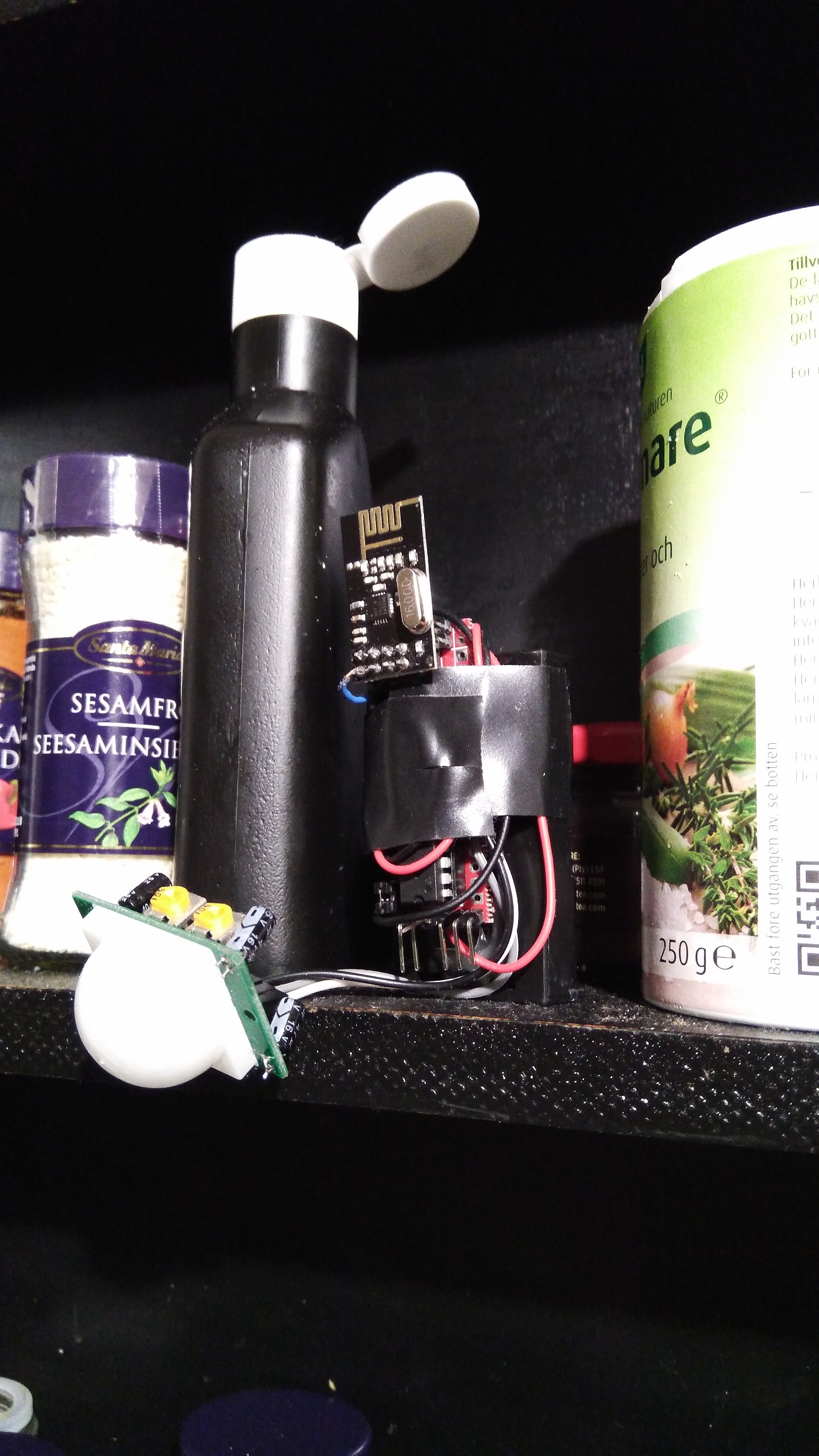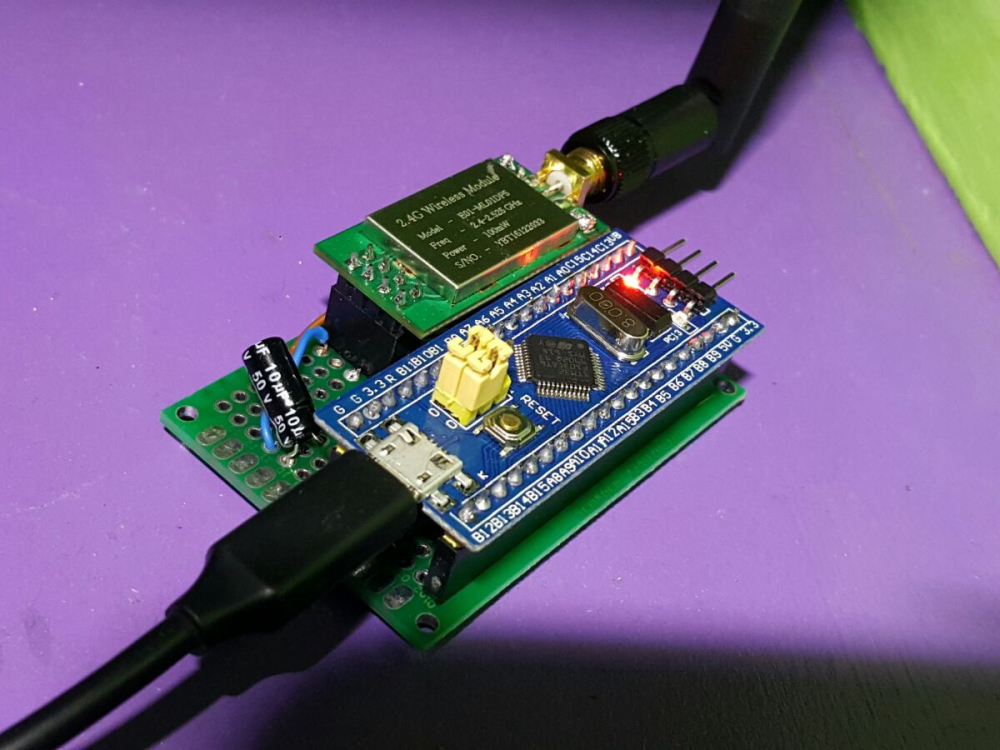What did you build today (Pictures) ?
-
I built a GPIO interface for the Raspberry PI using @GertSanders PCB (link)
I ordered the PCB via OSH Park, successfully soldered 2 and my setup is now much cleaner without these jumper cables.
For the second one, I soldered the NRF directly on the PCB (just because I wanted to gain some height), and everything works flawlessly.Big thank to @GertSanders for his PCB!

My gateway runs mysgw, Mosquitto and Node-Red.
In the back is my Raspberry Dashboard displaying the weather, info from my solar installation and the sensors MQTT messages.
-
I built a GPIO interface for the Raspberry PI using @GertSanders PCB (link)
I ordered the PCB via OSH Park, successfully soldered 2 and my setup is now much cleaner without these jumper cables.
For the second one, I soldered the NRF directly on the PCB (just because I wanted to gain some height), and everything works flawlessly.Big thank to @GertSanders for his PCB!

My gateway runs mysgw, Mosquitto and Node-Red.
In the back is my Raspberry Dashboard displaying the weather, info from my solar installation and the sensors MQTT messages.
-
I made this LoRa shield for an Arduino Pro Mini:
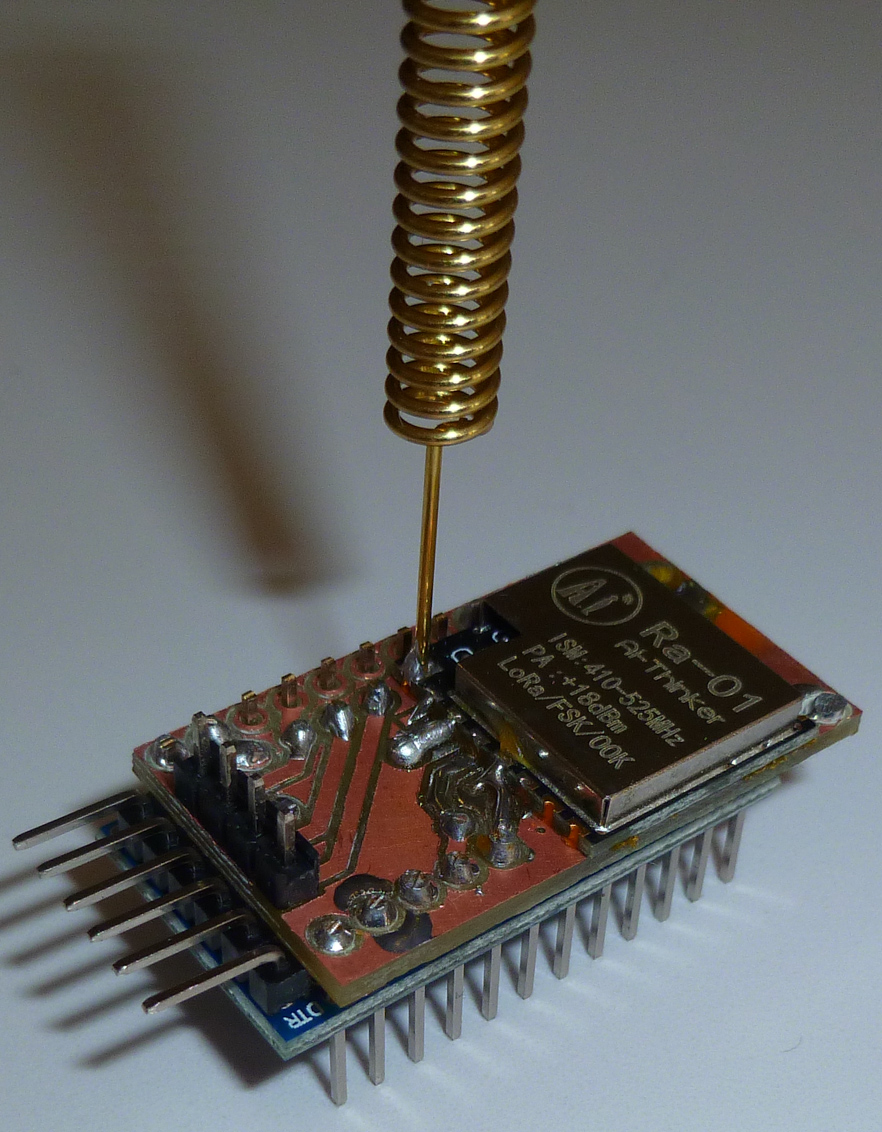
I like it because of the small form factor and because it preserves access to all of the Pro Mini pins. i.e. you can plug it in just like a Pro Mini.
I also gave it 4 header pins for an Si7021 TH sensor, which I haven't yet attached.
-
@sburlot Can't help but see your weather display in the background. What platform is that?
@dbemowsk :-)
It's a Raspberry 3, with a cheap 480x320 screen, and a Python+PyGame script.Start of my script comes from this script
Temp+Humidity comes from mySensors SenseBender Micro via NodeRed/MQTT
Solar power comes from my inverter via a script (also MQTT)
Weather from WeatherUnderground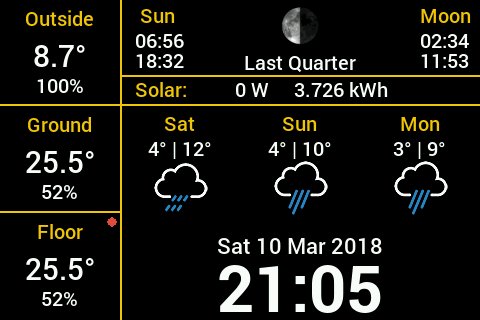
-
not built today, but someone mentioned fumes extractor, so this is what I built for soldering, light and fume extractor are powered by a small usb rechargeable powerbank. Fan has a active carbon filter behind it and works great for small to medium-ish projects I work on
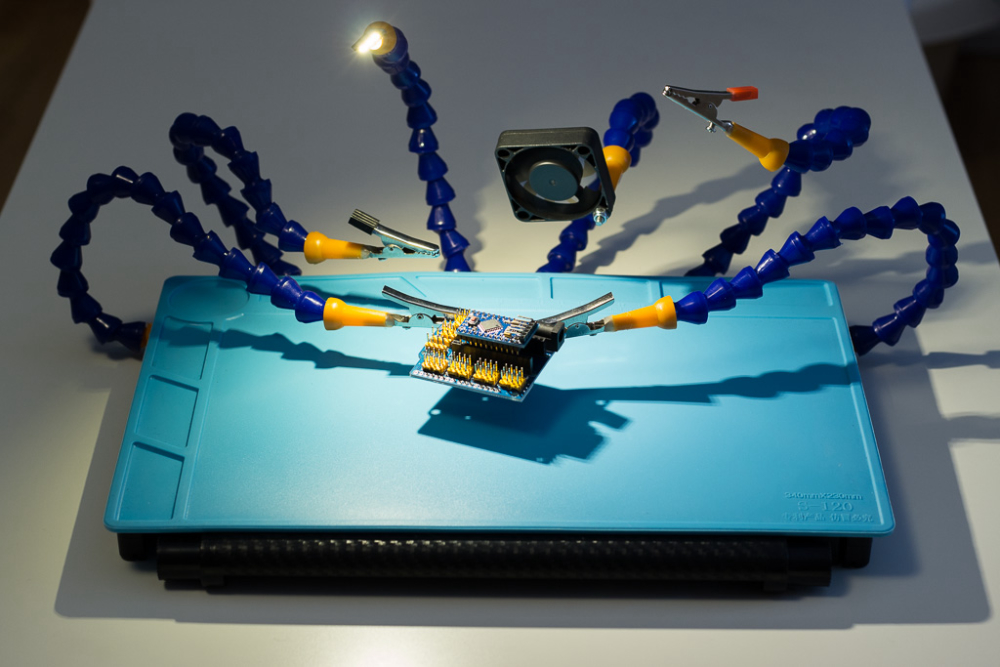
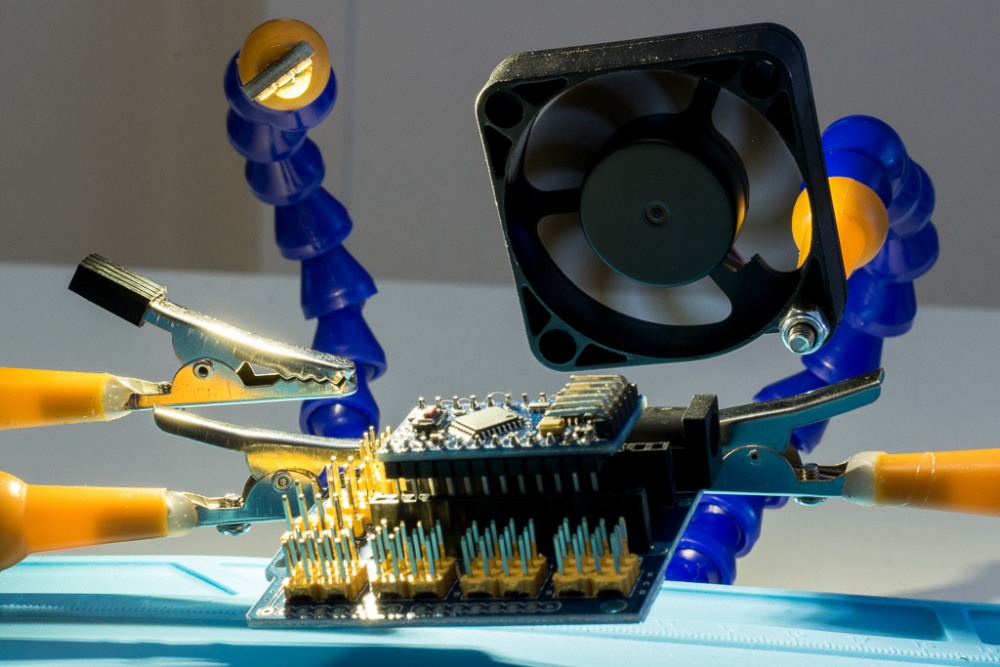
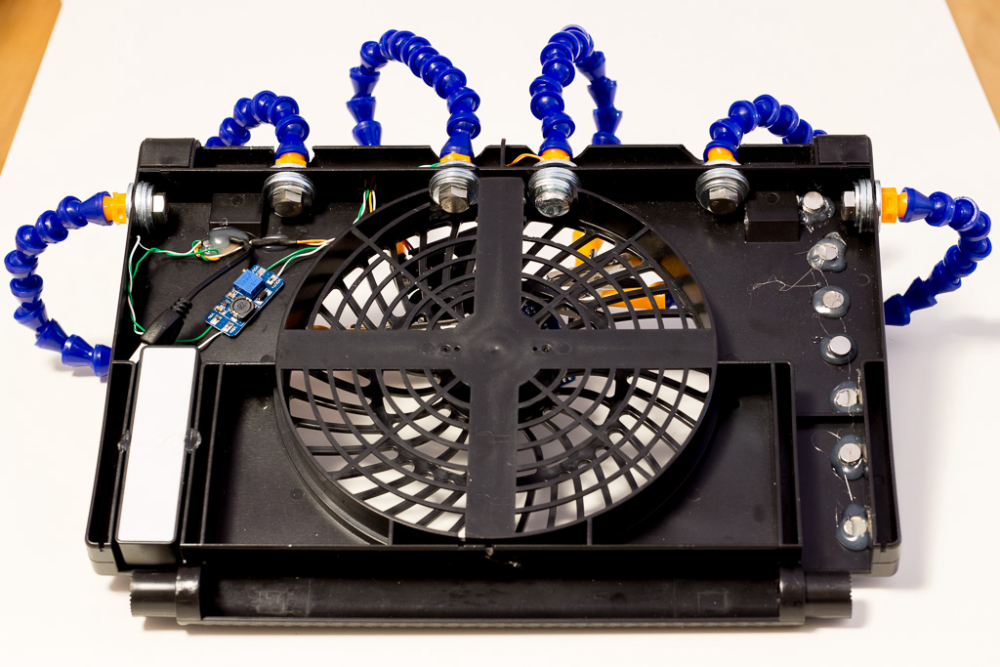
-
not built today, but someone mentioned fumes extractor, so this is what I built for soldering, light and fume extractor are powered by a small usb rechargeable powerbank. Fan has a active carbon filter behind it and works great for small to medium-ish projects I work on



-
@dakipro Very creative! Thanks for sharing. I've seen those flexible hose things before in other contexts, but I don't know the name. What is the term?
-
-
Thanks. About the cnc pipes, just check if they are US or EU threads, as I was initially planning to fasten them with nuts, but couldn't find any US type in scandinavia. So I had to improvise with A LOT washers and heavy screws as seen in the picture. For the base I used old laptop cooling holder (whatever the name is).
And it works surprisingly well for what I use it, I was expecting it to have a bouncing effect, but it is not that much noticeable.
Way better then that ebay crappy holder with big magnifying mirror that is just so flimsy and annoying.
I was planing to dedicate one hose as a solder feeder, but never bothered with it.Light is a touch-to-adjust type, very very practical , something like this
https://www.ebay.com/itm/5X-6-LED-Night-Light-Soshine-USB-Power-1W-5V-Touch-Dimmer-Warm-White-Light-B2L8/282772437504?epid=721587756&hash=item41d68cfa00:g:gZQAAOSw1cNaMlr5I also have a switch for a fan on the side, and a volt stepup as the fan works on 12V (9 or 10 is my setting).
I have glued the magnets on the right on the last photo, they are then actually on the left of the silicone mat where the "compartments" are
-
Thanks. About the cnc pipes, just check if they are US or EU threads, as I was initially planning to fasten them with nuts, but couldn't find any US type in scandinavia. So I had to improvise with A LOT washers and heavy screws as seen in the picture. For the base I used old laptop cooling holder (whatever the name is).
And it works surprisingly well for what I use it, I was expecting it to have a bouncing effect, but it is not that much noticeable.
Way better then that ebay crappy holder with big magnifying mirror that is just so flimsy and annoying.
I was planing to dedicate one hose as a solder feeder, but never bothered with it.Light is a touch-to-adjust type, very very practical , something like this
https://www.ebay.com/itm/5X-6-LED-Night-Light-Soshine-USB-Power-1W-5V-Touch-Dimmer-Warm-White-Light-B2L8/282772437504?epid=721587756&hash=item41d68cfa00:g:gZQAAOSw1cNaMlr5I also have a switch for a fan on the side, and a volt stepup as the fan works on 12V (9 or 10 is my setting).
I have glued the magnets on the right on the last photo, they are then actually on the left of the silicone mat where the "compartments" are
-
not built today, but someone mentioned fumes extractor, so this is what I built for soldering, light and fume extractor are powered by a small usb rechargeable powerbank. Fan has a active carbon filter behind it and works great for small to medium-ish projects I work on



-
Another EasyPCB video - a complete build of a 5v node with a radiotest and cleareeprom.
-
@dakipro What hose diameter do you recommend? I'm guessing larger diameters will be stiffer than smaller diameters, but that's only just my uninformed guess.
@neverdie i think i have the larger ones, but with 3-4$ pricetag one can easily order both and use what works best (or even combine them for more flexibility). I originally planned on using only 4 pipes, but then I figured why not put them all, they will just lie around anyway. Now I have two clamps orientated horizontally and two vertically for easier mounting.
Battery bank is I winner I think, it is very very practical and holds several hours.
Even if it goes flat during the project, it is just to plug everything into the wall charger, as one would have to do anyway. -
and that's a TV box turn into a mini pc more powerful than raspberry pi 3
and I installed linux with domoticez and imperihome EMMC Flash is fluid and fast
and toutsca works well8 x CPU: Amlogic S912 Octa core ARM Cortex-A53 CPU jusqu'à 2GHz (DVFS)
GPU: 750MHz + ARM Mali-820MP3 GPU Processeur
RAM: 3Go DDR3
ROM: 32Go EMMC Flash
Système d'exploitation: Android 6.0
Ethernet: 100M/1000M
WIFI: 2.4GHZ / 5.8GHZ 802.11a / b / g / n / Ac
Bluetooth: BT4.1
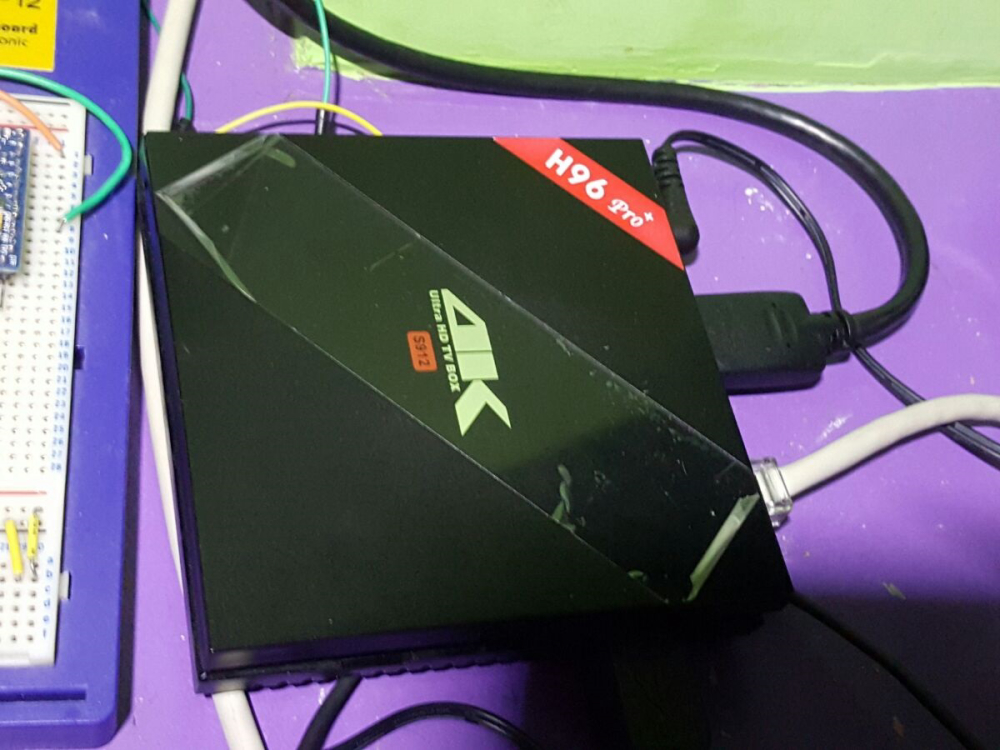
-
Not working on hardware at the moment, but I am still "building" things with mysensors.. Recently I have been moving all my homeautomation to docker containers, and also moving stuff towards using MQTT as a backbone transport.
Right now I have moved automation rules from domoticz to nodered, after which I have "killed" domoticz (the only reason why I had been keeping it alive, was because it handled some of my automation rules for turning tv / amplifier on when chromecast was active etc).
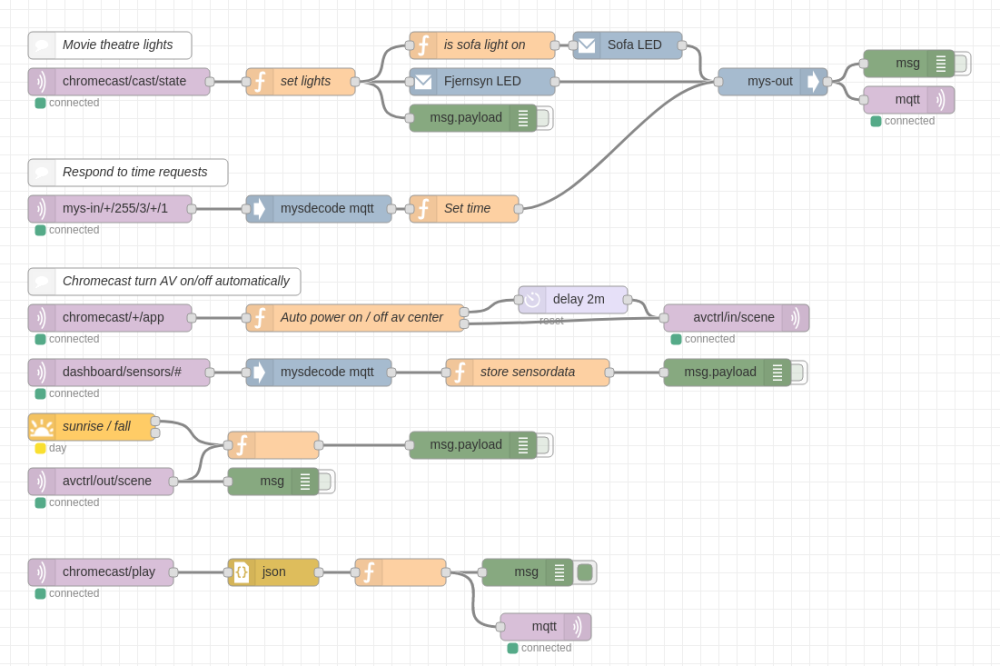
Together with my chromecast "surveilance python service" I get notifications on MQTT when any of my two chromecasts starts an app / pause/ play etc. The python program also has a MQTT listener, so I can send pause/play etc. to my chromecasts over mqtt. And even throw a stream to it over mqtt.
Today I made a universal control endpoint, so I can send pause/play etc. to a single mqtt topic, and then nodered directs it to the active chromecast, or to my dvd player if that is the active in the current scene.
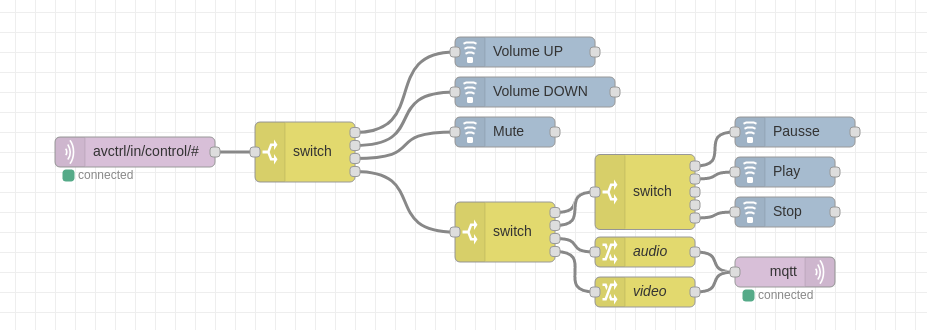
In the end everything should play together with a dashboard that I have made in angular5 (rewriting it at the moment to use MQTT instead of various http calls)
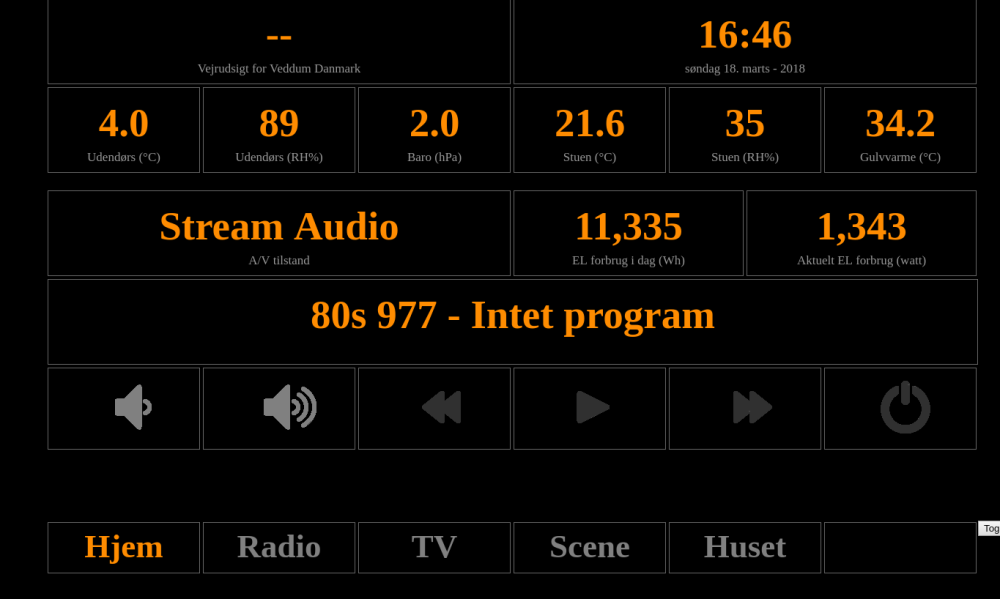
The plan is that the dashboard is on a wallmounted tablet, acting as a simple dashboard / weather station, where one can control basic things in the livingroom (start streaming of specific Radio / TV channels among other things).
The nodered project can be found here, if anyone would like to have a look..
-
Not working on hardware at the moment, but I am still "building" things with mysensors.. Recently I have been moving all my homeautomation to docker containers, and also moving stuff towards using MQTT as a backbone transport.
Right now I have moved automation rules from domoticz to nodered, after which I have "killed" domoticz (the only reason why I had been keeping it alive, was because it handled some of my automation rules for turning tv / amplifier on when chromecast was active etc).

Together with my chromecast "surveilance python service" I get notifications on MQTT when any of my two chromecasts starts an app / pause/ play etc. The python program also has a MQTT listener, so I can send pause/play etc. to my chromecasts over mqtt. And even throw a stream to it over mqtt.
Today I made a universal control endpoint, so I can send pause/play etc. to a single mqtt topic, and then nodered directs it to the active chromecast, or to my dvd player if that is the active in the current scene.

In the end everything should play together with a dashboard that I have made in angular5 (rewriting it at the moment to use MQTT instead of various http calls)

The plan is that the dashboard is on a wallmounted tablet, acting as a simple dashboard / weather station, where one can control basic things in the livingroom (start streaming of specific Radio / TV channels among other things).
The nodered project can be found here, if anyone would like to have a look..
-
I have been using influxdb/grafana for the last year or so, for logging data and presenting it, so no need to use domoticz for that. Over a year ago I injected nodered into the stream, so it sits between mysensors and domoticz, and was used to route things around (And make some fake sensors for domoticz).
For the dashboard part I have been developing my own solution. First it was running within domoticz as a customized dashboard, but I moved it to Angular instead, with a strong dependency towards domoticz, as I could query that to get sensor values. Lately I had moved on to use MQTT for the dashboard (and internal node-red data routing). There I can get persistent data (retain) that keeps the latest data on a given topic. Then my need for domoticz went away there..
The last thing I then used domoticz for, was the automation rules for turning on / off my tv when the chromecast was activated, and control a couple of LED strips according to the state of the chromecast (playing / paused etc). With that moved to nodered, then domoticz could be turned off.
The complete software stack is a bit larger, than with domoticz for everything, but it is much more flexible, than what I could achieve with domoticz.
also it brought in a couple of needed updates for my node-red mysensors nodes, so that was a "bonus" as well :)

